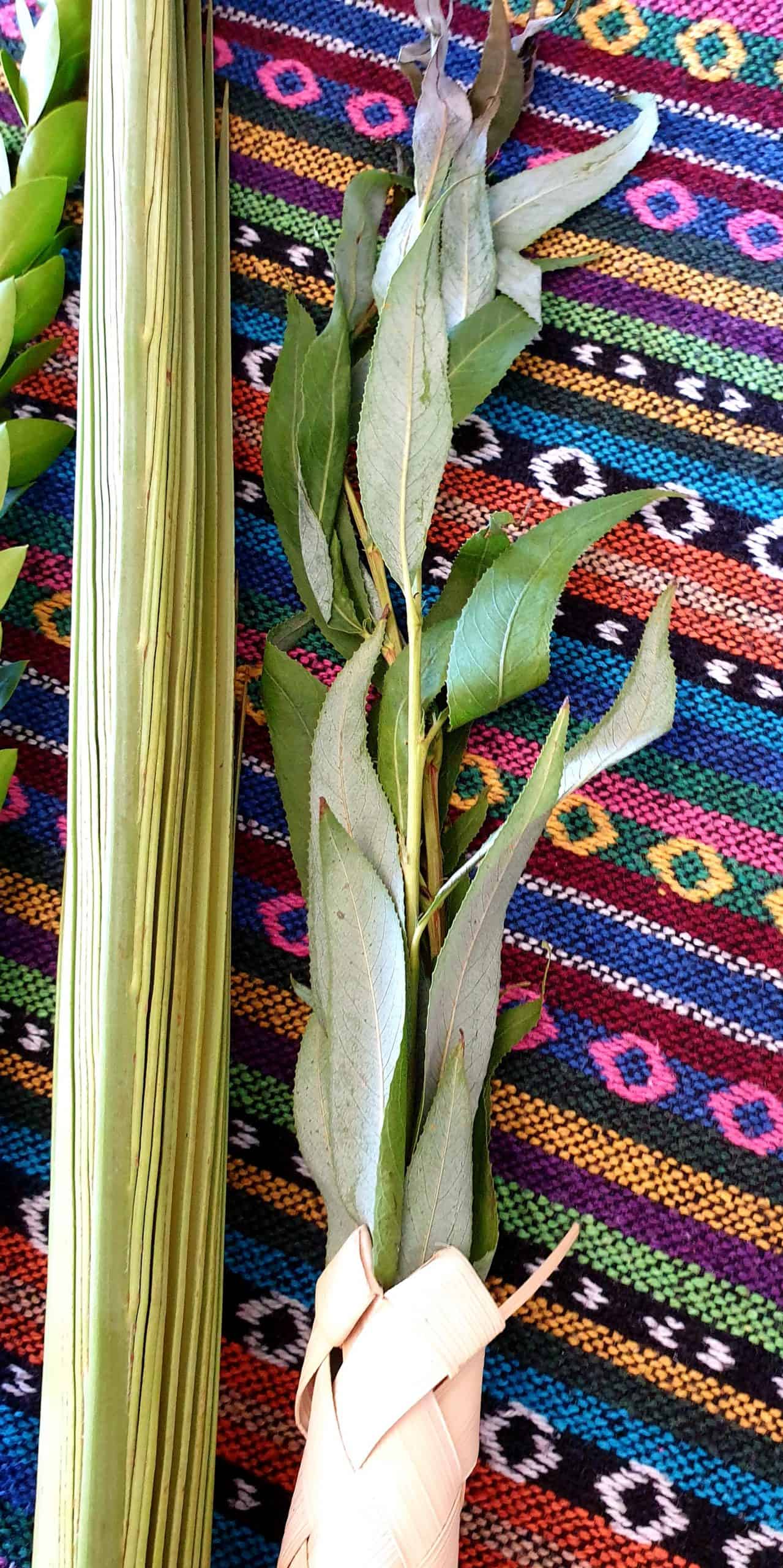Moshe Kempinski
We are continuing with Hashem’s help our Project of taking photos from time to time to reflect the beauty and the history of the ancient and renewed city of Jerusalem and of the land of Israel and to reveal the message within each captured moment.
TODAY’S PICTURE
THE ARAVOT ( willow branches) ON THE LULAV
This snapshot of the ARAVOT on my LULAV brings back into my memory a Torah thought I once heard from a legendary Torah teacher and activist for the land of Israel, Rabbi Channan Porat of blessed memory
Rabbi Hanan Porat.( Z”L) returned to the Talmudic explanation of why we bring together four specific species on the holiday of Sukkot .
We read that “..ye shall take you on the first day the fruit of goodly trees( the etrog) , branches of palm-trees( the lulav branch of the palm tree) , and boughs of thick trees( the Hadas -Myrtle branch), and willows of the brook, and ye shall rejoice before HaShem your G-d seven days.
The Talmud describes the classic understanding that the etrog represents a species that has taste and smell, Spiritual knowledge and Divine deeds.
The palm branch has taste but no smell,
the myrtle branch has smell and no fruit and therefore no taste.
The willow branches have neither.
The Talmud describes how each gives to the other what the other is lacking.
Rabbi Porat ( Z”L) then asks ” what then does the willow branch give…it has nothing”.
Furthermore the willow branch is not insignificant as it is a critical member of the four species.
During the days of the temple, willow branches were brought from the village of Motza and were placed around the altar throughout the feast . On the last day after putting away the lulav and etrog we remain holding five branches of the willow branches in our hands.Finally at the end of the service they are flung on top of the Ark of the Scrolls, a place of honor.
Not a minor role at all.
Rabbi Porat ( Z”L) suggests that throughout the bible we find the willows connected to water , rivers and brooks. The willow branch cannot live long separated from water. It needs water and is clearly aware of its need and yearning for water.
It is that yearning that the willow branch gifts to the other of the four species.
One can become so enamored with the fact that one is filled with taste and resplendent with fragrance and forget that he must be filled with constant yearning. Yearning is the most powerful force in our spiritual growth. Without that yearning even those that seem to be filled with Torah knowledge and Spiritual activities can wither unless they constantly retain that yearning for soothing and quenching living waters.
